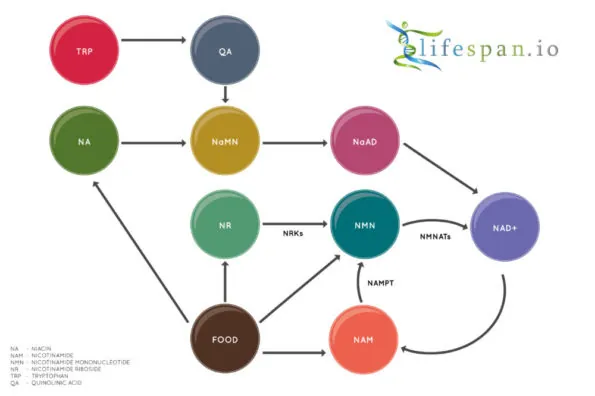I recently visited the Longevity Leaders Conference in London and had the opportunity to speak with Kelsey Moody, the CEO of Ichor Therapeutics, a company focused on targeting age-related diseases by targeting the aging processes themselves. I previously interviewed him back in 2017, so it was the ideal time to catch up on what had been happening with his company since then.
Ichor and its portfolio companies have been very busy over the last year, so I thought it was time that we caught up on progress. Can you tell us how things are going for the Ichor group?
Ichor really had a good year in 2018. We raised over $16 million across our portfolio, and that’s really allowed us to scale up all aspects of our operations. We’re at over 50 employees now, mostly bench scientists and research technicians, and we’re really delivering on our goal of being a vertically integrated biopharmaceutical company.
What that means is we want to be able to take any idea, regardless of what it is, such as a type of compound or therapeutic indication, and rapidly turn it from the discovery stage, through the pipeline, into the first demand studies. The additional capital that we’ve raised and the infrastructure that we’re putting online are really allowing us to put that all together to support the field of longevity.
In terms of the intramural programs themselves, every one of our programs is fully funded, which is really exciting. We’re continuing to partner with a number of other startup companies that work with us, either collaboratively or as clients, so we’re able to leverage our knowledge of the aging space and technical expertise with particular types of research models and so forth to support other companies in the space as well as pursue and promote our own intramural programs, and last year, we teamed up with Jim Mellon’s company, Juvenescence.
Yes, Juvenescence and you made a collaborative project called FoxBio. How’s that going?
Unfortunately, I can’t say a whole lot about the progress on FoxBio, except to say that I’m very, very bullish on it and very excited about the prospects and implications. We are very excited to partner with Juvenescence due to the depth of experience that they bring to the drug discovery process and the insights that they have about creating not just strong drug development and discovery programs but also company structures and platforms that allow entities to raise the large amount of capital that is necessary for clinical trials, as it’s just a huge value add to the core portfolio. We found them to be great to work with, and we’re really excited to expand the scope of that relationship over time.
It’s really good to see people like Juvenescence and Jim Mellon, in particular, getting involved with you guys and earlier-stage research, so let’s hope there’s more of that. What’s the news on Lysoclear, the therapy for adult age-related adult blindness?
Again, I can’t talk a whole lot about the specifics, but we did close a financing round in December of 2018 to move from our proof-of-concept lead drug candidate to a clinical candidate that would be suitable for first-demand studies.
We’re in the process of putting together our plan to reach IND (investigational new drug) status. IND in the US system is the point at which you’re able to go into human trials for the first time. That requires all kinds of backend support, from manufacturing your product under good manufacturing processes (GMP) to toxicology studies and so forth.
We were very fortunate last year to recruit a chief medical officer who has a lot of experience in drug development and discovery. He’s got about 12 drugs and medical devices under his belt and about 185 clinical trials in the macular degeneration space. Specifically, he was behind the entire DARPin program at Molecular Partners, which led to a $500 million deal plus double-digit royalties with Allergan, a large pharmaceutical partner, so we’re very enthusiastic to have someone with that depth of expertise, really taking the reins on our clinical planning and making sure that when we’re ready with our candidate to pull the trigger, we’re able to navigate clinical and regulatory issues that might arise.
Which is always a very challenging area, but another area that has been problematic in the past has been taking the research from a basic stage to a translational point where it can then go to market. A few years ago, you mentioned in an interview that there was a problem with the basic researchers not having enough wet work experience, while the people who are capable of innovating in the translational stage tend not to think outside the box. Has that improved in the last few years?
Yeah, I think so. I think there’s a lot of academic labs in particular now that have an eye for spinning out companies, particularly with new groups emerging in the area. Juvenescence, of course, is licensing different types of technology and having a partnership with the Buck Institute, for example, and Life Biosciences, a new player in the space, is bringing in substantial amounts of capital to assist academic labs with translating programs.
What’s really exciting about all of this is when you bring these sophisticated drug developers into this space, you’re adding a certain level of robustness to the discovery process that might not necessarily exist in a traditional academic setting. It really allows you to combine the best of both worlds.
To circle back to one of your spin-offs, in a previous interview, we touched upon senolytics, and it was something that you were a bit on the fence about getting involved in. Now, you’ve gone forward with Antoxerene, which is developing senolytics, so what made you change your mind to start going in that direction?
I think our main motivation really came out of the work by Kirkland’s group that showed the profound life extension effects in mammals in response to senolytic therapy. Antoxerene in itself is a platform company; the basis of its technology is if you’re trying to do drug discovery on a pathway of interest. Let’s say you’re trying to disrupt the interaction of two proteins that lead to a disease state. In order to do high-throughput drug screening, you need to make very large quantities of the proteins that are involved in the pathway, and then you screen drugs to identify drug leads that can disrupt that interaction.
The problem is that it’s very difficult to make many types of proteins, such as p53, for example; the guardian of the genome is this monstrous huge thing of a protein, and people can’t make it on a scale for drug screening unless you use hyper-stable mutants or small fragments rather than the full-size.protein.
The Antoxerene platform allows us to make these difficult- or impossible-to-make proteins on a scale suitable for drug screening. So, through that platform, we’ve been able to do a variety of screening projects with applications in oncology as well as senolytic therapy and so on. The joint venture that we did with Juvenescence and FoxBio was for some of these senolytic program assets but isn’t everything that’s being done at Antoxerene, and we’re actively looking for additional partners at the pharmaceutical companies that might be interested in partnering with us to leverage that technology to solve technical problems that they have with their own platforms.
That’s something that we’re hoping to expand upon and build on in the future. We kind of have this observation in pharmaceuticals and biopharmaceuticals that we feel, at least as a company, that not enough attention is paid to the foundations on which these clinical programs are being built. One of the hypotheses at Ichor currently is that the excessively high failure rates of drugs in the clinic might have more to do with the poor selection of animal models or insufficient preclinical R&D, which, of course, is the less expensive place to operate them.
Perhaps our interview next year or a couple years down the road will reflect me eating these words, but that’s something that we’ve kind of been observing. So, while everyone else is rushing to get into the clinic as quickly as possible, we don’t want to be the first ones in the clinic for any particular pathway or disease or anything, but we don’t want to be the last; we understand that we want to be the ones that are in at exactly the right time, and that’s a balance of being early into the clinic but also making sure that the foundations of what you’re building, your programs, are very robust.
Just to speak about how you’ve developed the company a little bit: as well as your own aging-focused research, you do contract work for other labs for various things; how do you think this side work helps you as a company to grow?
In a lot of different ways. First of all, companies of our type are rarely cash positive, and they never have revenue. The fact that we have revenue for the company has really allowed us to expand in a way that would have been really difficult had we attempted to do that just with investor financing. Our investors appreciate that at the level of our portfolio companies, they’re really only paying directly for projects and they’re not carrying the burden of building all kinds of new infrastructure and so forth like you typically experience, so that’s been very positive for us as well.
It’s highly beneficial to be able to be involved with other early-stage technologies and companies in the space, because when things look promising, we can speak with those clients and potentially make introductions and provide strategic support and so forth to help them progress their programs faster.
If you haven’t gone through all the hoops of drug discovery and the development pipeline before, there’s a lot of places that you can stumble in very non-obvious ways, and because we’re philosophically aligned with what this movement is trying to accomplish, being able to do our part to support other startups is very rewarding and something that we’re keen on continuing to do.
I should mention that to allow us to further scale and streamline our contract work, we will be spinning out this year all of our contract research services into a separate corporate arm called Ikaria Life Sciences, so we’re going to be building that out as a major focus area in 2019.
So, you just keep growing and growing, you’ll be the mayor of Lafayette soon. Some people wonder why you actually set up in Lafayette; what was the reason you chose that particular area to build your company?
When I was in medical school at SUNY Downstate Medical University, which is in Syracuse, about 10 minutes away, what I identified about the area is the greater Syracuse region, in general, is actually an ideal place to set up a physical company. Most of the time, startup companies in the life sciences tend to be virtual, and they work with either academic laboratories or contract research organizations to do work.
The problem is the aging space is very new; take senolytics, for example. We spoke earlier about a number of different companies focused on analytics or compounds to destroy bad senescent cells that contribute to aging disease; if you had a product pipeline that you wanted to develop, you couldn’t outsource that to a contract research organization right now because it’s a brand new area of research, and the contract research organizations have not yet commoditized those sorts of models and services in a way that you can just buy off the shelf. We found that it’s very important to actually set up physical infrastructure to support R&D, and the greater Syracuse area is very unique.
It’s a bit economically depressed, particularly the real estate market, so I’m able to buy buildings for the cost of rent in Silicon Valley or Boston for a year, year and a half. The value proposition is enormous. There’s an airport, and we also don’t run into issues of obtaining high-quality intellectual capital, because there’s a medical school there: Upstate Medical, Syracuse University. Ichor has a Ph.D. program with SUNY ESF, and Cornell’s just down the road.
That kind of creates a perfect storm of intellectual capital as well as affordability. I should also mention that back in World War Two, Bristol Myers Squibb had a huge presence in Syracuse and produced something like half the world’s supply of penicillin, and Bristol Myers still has manufacturing capabilities actively in operation in Syracuse. So, as Ichor has had an eye towards PLP-compliant animal studies and GMP, manufacturing, and so forth to support our pipelines, we’ve been able to recruit very high-quality talent at the level of quality assurance professionals as well as technicians and research scientists that are used to operating in a regulated pharmaceutical environment. That balances the discovery focus of our teams very effectively, adding that level of industrial rigor to our creative processes.
That’s an interesting insight into the company itself, now let’s talk about the man behind it. How did you develop your career from someone who was a high school and college athlete, to working at McDonald’s, to where you are now?
Well, like a lot of people that are really trying to start companies and do things in this space, I started by reading a book, Aubrey’s book, in fact, Ending Aging, which I think was published, a little over a decade now, in 2007 if I recall, and I really liked the concepts that were communicated in that story. I told myself that I’m going to switch to biochemistry as a major, and I’m going to pursue this line of work until I am certain that Aubrey is wrong.
Despite my very best efforts, I have not been able to get to any sort of definitive conclusion on that. He still might be, and many have tried to prove him wrong, but the trend is in his favor. That, of course, took me to work with Aubrey at SENS Foundation and various startups in Silicon Valley and then eventually coming to Syracuse as a medical student where I currently am.
One of the really interesting things that I think is underappreciated about the SENS paradigm, and is a central component to how we’re structuring our companies, is really this damage repair approach. A lot of people like this the SENS damage repair approach that Aubrey put forth because it’s something that we can understand and the whole argument of sidestepping, the ignorance of metabolism and so forth.
What’s underappreciated by most people that do drug development, that I think is worth highlighting here, is that the sorts of therapies that would emerge from this line of thinking are therapies that are going to be used intermittently, and that is hugely beneficial from a development perspective. If we think about diseases like cardiovascular disease and high cholesterol, what happens with those patients? They’re put on statins for life, and that’s a chronic treatment that you’re taking every single day. So, the safety of those sorts of drugs and the efficacy of those sorts of drugs needs to be pretty high in order to maintain clinical benefits, but for these different classes or damages of aging because they take a lifetime to accumulate, you can actually generate drugs that have less favorable toxicity profiles; they’re less effective in terms of just efficacy against the target, but they’re profoundly better potentially in a clinical setting, just because the damage takes so long to accumulate.
That creates a huge opportunity for drug developers to bring in whole new classes of drugs that are actually able to mitigate many of these diseases of aging in a way that’s rather unprecedented and very much defies the chronic-administration sort of model that we’re familiar with in this space.
Finally, I think one thing that people always ask us in the community is about the perception that aging is a disease and we can’t do anything about it unless the FDA, the EMA, etc, classify it as a disease. Do you personally see the classification of aging as a disease as necessary for us to get these therapies or other ways around it?
Not at all, at least for the things that we’ve chosen, although there are others that it certainly would be beneficial for. We kind of have two guiding principles for how we approach translating our programs. The first is that we only do one new thing at a time. So, if we’re going after cellular senescence, which is a brand new thing that there’s not much track record of, we’re not going to introduce some new treatment modality. We’re going to use small molecules that have been the way that pharma has approached diseases since the dawn of time. In the case of our macular degeneration program where we have an enzyme therapy that we’re developing to remove junk in the eye that we think causes disease, we’re following the exact same translational path that lysosomal storage disease companies like Genzyme, Sanofi, and Biomarin and others have successfully translated since the late 80s, early 90s.
The one change is we’re using non-human enzymes to try to upgrade lysosomes rather than try to repair broken lysosomes. So, with everything that we’re doing, we’re trying to make one incremental step at a time.
The second thing that’s a guiding principle for us which speaks to your point about aging as a disease is that we try to have for all of our programs a normal disease indication, but we also have the ability to target the fundamental damages of aging with the programs that we’re developing. For our senolytic program, we’re going to go after the normal sorts of indications that other companies might go after but will have the side effect of also perhaps going after a fundamental disease process.
I also had the great privilege of listening to the Chief Medical Officer from resTORbio present their clinical results thus far at a conference recently, and they’re taking a very similar measured approach where they’re looking at the rate of infection and hospitalization and so forth in patients that they’re treating with mTOR inhibitors. What we’re seeing from that, though they’re going after a specific indication, makes it clear that there should be a global systemic rejuvenation if the mechanisms underlying their drug and so forth work in the way that we hope that they do.
Our approach has always to been change one thing at a time and only one thing at a time and to focus on programs that have conservative paths to the clinic but have anti-aging benefits as a side that can be developed in the future.
Senolytics is a classic example of that, because while you might put it through with one indication, if you’ve got it then approved, it could then be used off label for so many other things, potentially.
Absolutely. Yeah.
So, we don’t need it classified as a disease; sure, it would be nice, but it’s not necessary.
From a development perspective, it’s probably not necessary. Where I think the benefit comes in is really at the level of public opinion and people understanding that aging seems to be something that’s malleable; it seems to be something that is susceptible to pharmaceutical intervention and, as such, is something that we should really be working on in earnest. I think that that’s really where the value of that sort of aging as an indication or aging as a disease is potentially valuable.
So, there you go, you’ve heard it from the horse’s mouth, everybody; these are the people on the front line, and they should know. Thank you very much, Kelsey, for taking the time to speak with us today.
We would like to ask you a small favor. We are a non-profit foundation, and unlike some other organizations, we have no shareholders and no products to sell you. All our news and educational content is free for everyone to read, but it does mean that we rely on the help of people like you. Every contribution, no matter if it’s big or small, supports independent journalism and sustains our future.

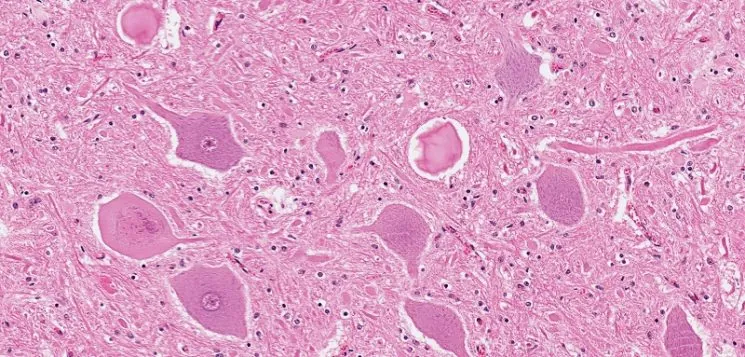

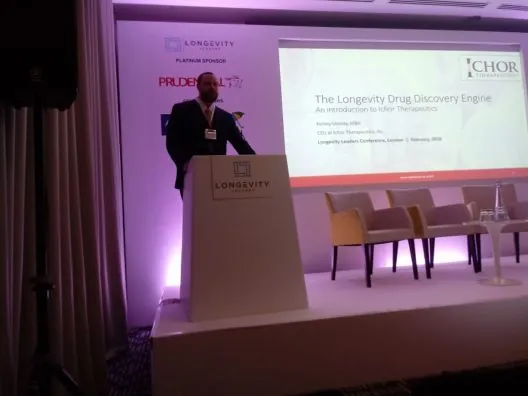

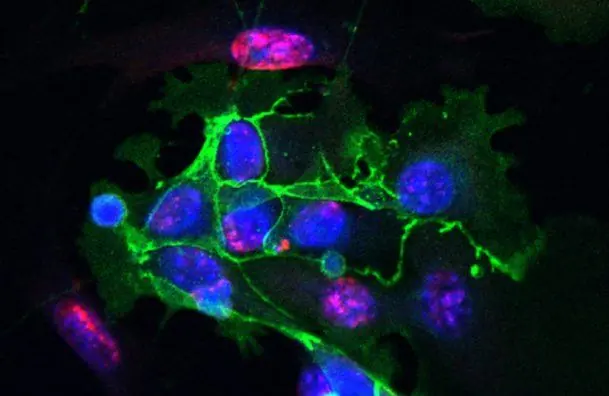

 Speaking of insurance companies, it was interesting that the large insurance companies Prudential and Legal & Generall were both sponsoring the event; Prudential had even produced an interesting booklet for guests with the title “Prepare for 100” boldly on the cover.
Speaking of insurance companies, it was interesting that the large insurance companies Prudential and Legal & Generall were both sponsoring the event; Prudential had even produced an interesting booklet for guests with the title “Prepare for 100” boldly on the cover. Joao delivered the introduction in his usual fun and informative style, which included some amusing moments typical of his presentations and that served to break the ice with people are new to the topic. I have seen Joao present a few times, and it is always a pleasure to listen to him give a talk.
Joao delivered the introduction in his usual fun and informative style, which included some amusing moments typical of his presentations and that served to break the ice with people are new to the topic. I have seen Joao present a few times, and it is always a pleasure to listen to him give a talk.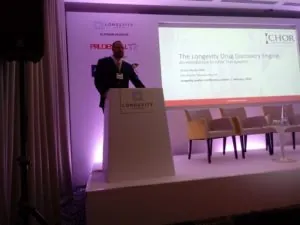 Ichor Therapeutics
Ichor Therapeutics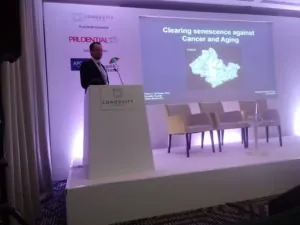 Dr.
Dr. 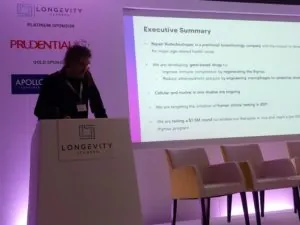 Last but not least was CEO Reason presenting for his company,
Last but not least was CEO Reason presenting for his company, 


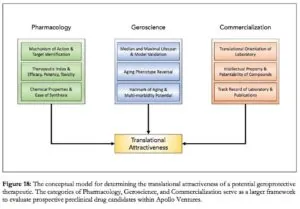


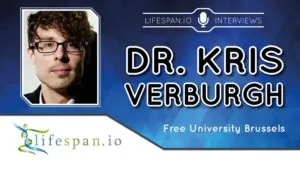 This month, we published two nice interviews that you might find interesting. One was with
This month, we published two nice interviews that you might find interesting. One was with 








